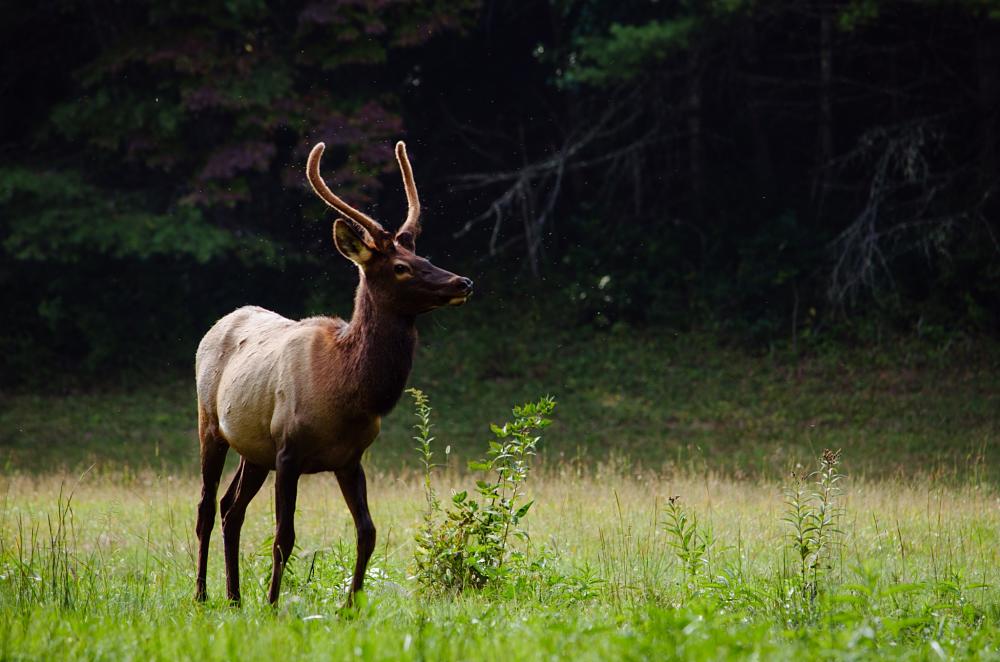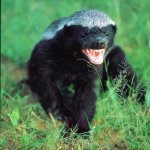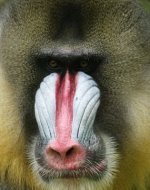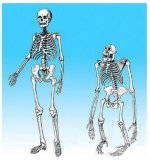elk Facts
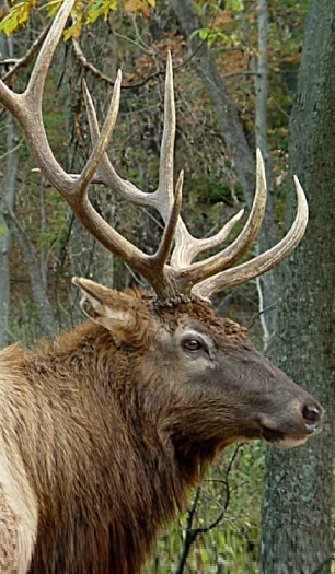 Portrait of an Elk
Portrait of an ElkOne of the most fascinating elk facts, is that their ancestors had 8-inch long tusks, just like a walrus! The elk is the second largest member of the deer family. They are smaller than the moose overall, but their incredible, branch-like antlers are longer than those of the moose, and when measured from the ground to the top of their antler rack, many elk are quite a bit taller than moose.
A mature male elk may stand over 5 and a half feet at the shoulder, and the largest will top nearly 1100 pounds. The elk is reddish brown in color, with a beautiful wedge-shaped head, and large, expressive eyes and ears. Males grow a huge pair of antlers, and have a mantle of dark fur around the neck. Females and even youngsters of some northern subspecies may also have manes.
Elk also have two large teeth in the upper jaw called ivories, whistlers or buglers. Scientists believe these teeth were once 8 inch long tusks, similar in appearance and direction to those of a walrus. There are small deer species in existence today who still have long tusks, but they don't have antlers. It is thought that when the elk developed antlers as a weapon, it no longer had a need for the tusks.
Elk are adaptable, tenacious, herbivores that eat a large variety of plants, and can exist in many habitats from deep forest to arid, near-desert conditions. They are ruminants, just like cows, and have a four-chambered stomach that allows them to digest lots of vegetation that has little nutritional value.
During winter months, they may strip the bark from trees, and eat moss, twigs and acorns. When food is initially swallowed, it is stored for a few hours in the first stomach chamber, called the rumen. After the food has mellowed, the rumen sends balls of partially digested food back up to the mouth, where the elk will continue to chew it, before finally swallowing it again. This is called "chewing cud", and it helps large animals to survive on meager rations.
The adaptable elk also grow double coats for winter time that are lighter in color than their summertime garb, to help them blend in. In the spring, they tend to look a little shabby as the fur falls out and is replaced by their rich, single-layered coppery colored summer coat.
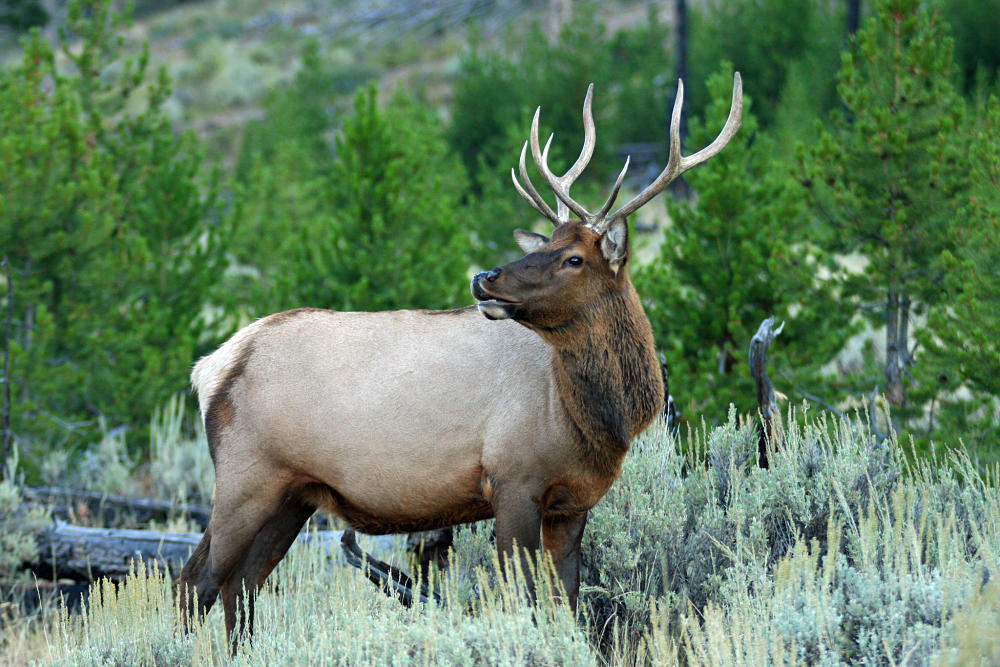
Elk are social animals who live in same-sex herds of 10 to 20 individuals, that are loosely structured, and may come together in much larger groups, particularly as they migrate to higher ground. The springtime migration of elk may bring together thousands of animals into one massive herd as they seek out green pastures.
Elk range across much of North America, where they once numbered nearly ten million individuals. The North American elk is also called a wapiti, which means "white rear" in the language of the Shawnee Indians, and refers to the distinctive, beige area of fur surrounding the elks tail. They were a vital part of the lives of native Americans, who fashioned elk bones and elk antlers into various tools, weapons and decorations, made clothing and tents from elk hides, and consumed or cured elk meat to survive.
The Lakota Sioux also treasured the elk, and male babies were awarded elk ivories to bring long life and prosperity. The Lakota people believed the spirit of the elk brought wisdom and courage to them, and was a symbol of potency.
After European settlers arrived, and with the increase in farming, the elk population dwindled, and by the early 1900's, only about 90,000 elk remained. Today, however, elk populations are healthy, and number close to one million animals across Canada and the United States.
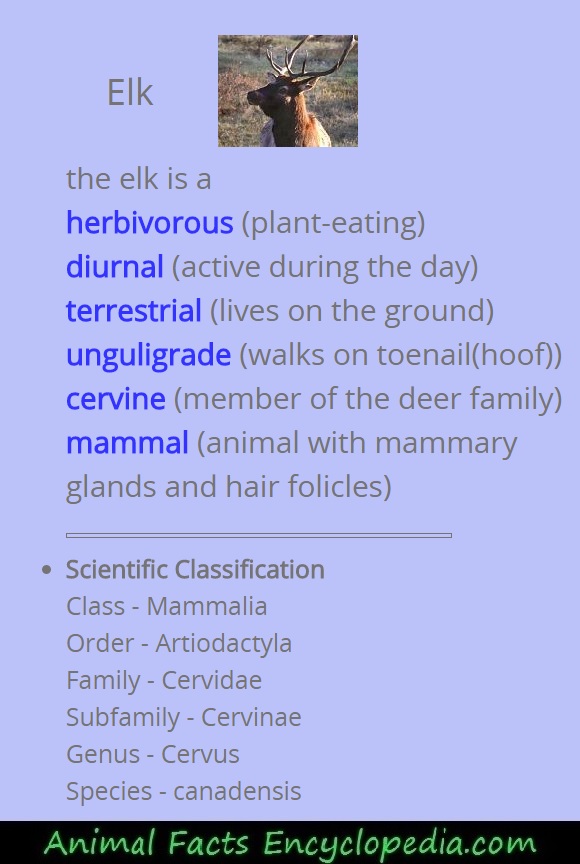
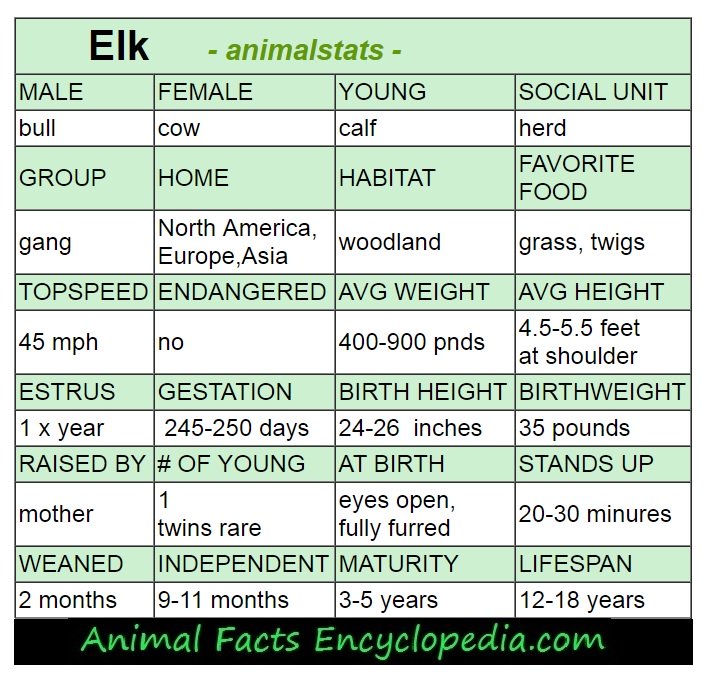
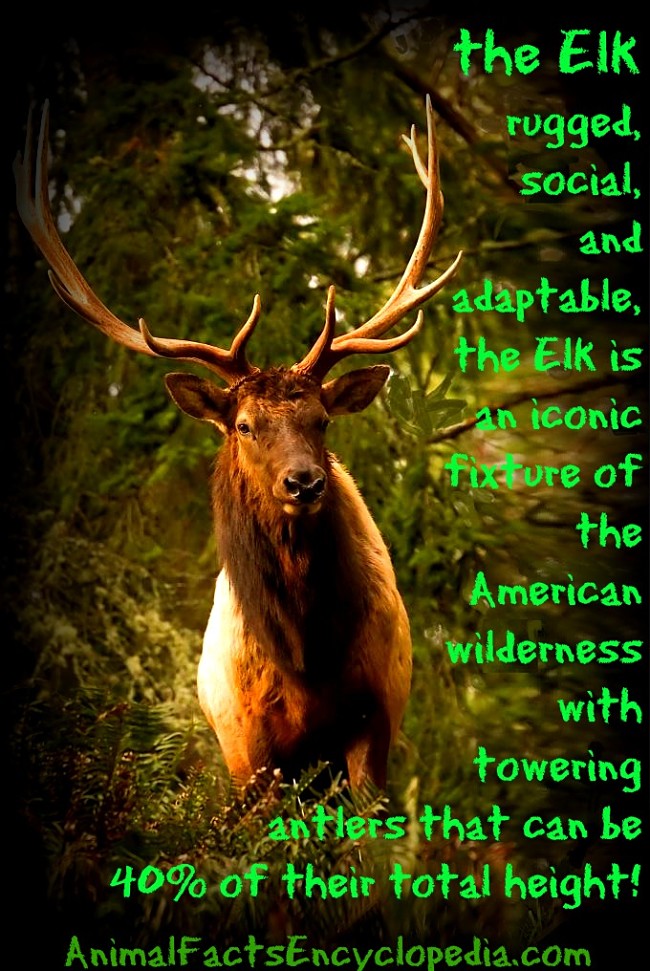
elk lifestyle
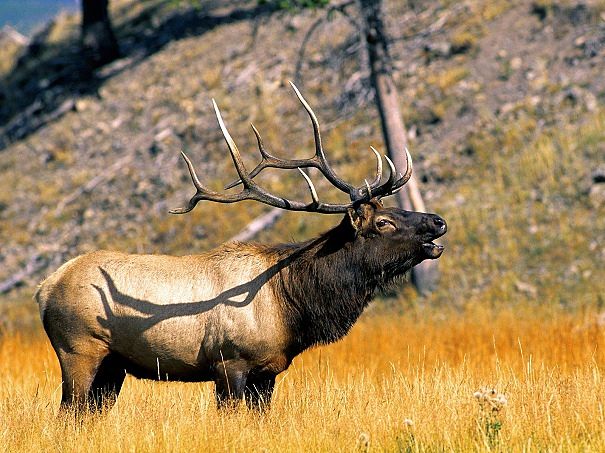
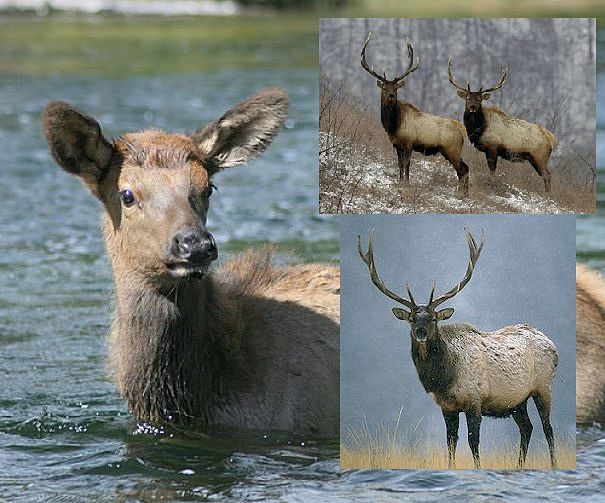
Elk are generally peaceful, social creatures that live together in large herds and cooperate to protect themselves from predators. In late winter and spring, herds of elk, called gangs, are divided by sex.
Females may congregate in huge gangs with several hundred members. These include their youngsters from the year before, and are usually guided by a few older members who decide where to graze, when to rest, and when to start migrations.
Migrating is an important tool in the elks survival, and timing is critical.
In the winter months, elk must be near forested areas with many trees for cover, and also to strip the bark.
When spring is near, the females in charge begin to head towards valleys where seasonal grasses will soon emerge. Feasting on freshly sprouted greenery is key to the elk replenishing itself after the harsh winter, during which they may loose up to 250 pounds.
Male elk may stay alone for awhile after the rut, as long as their antlers stay. The antlers allow them to protect themselves from predators, but weakened bulls will join up early, before their antlers fall, and enjoy the safety of a group.
Male herds, because they don't include offspring, are generally smaller and more fluid, with members coming and going. Both sexes, however, may meet up and move together in massive herds during the migration, which, in places like Yellowstone national park, may number in the thousands.
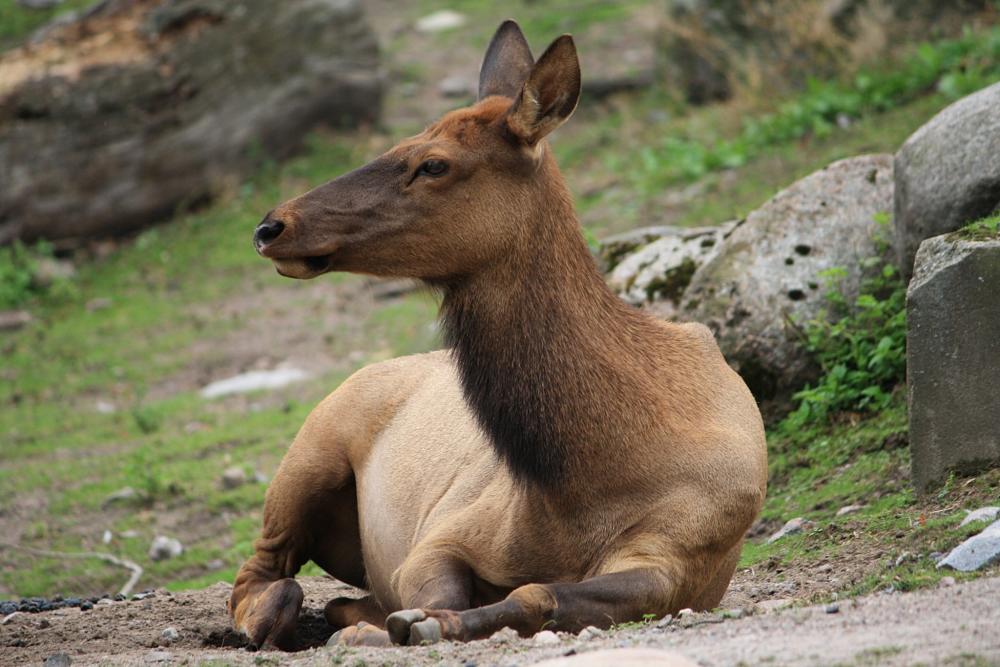
elk facts on reproduction
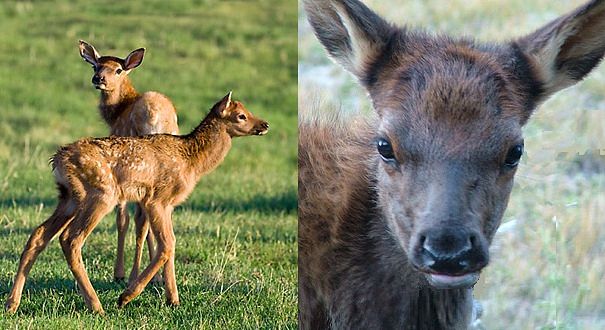
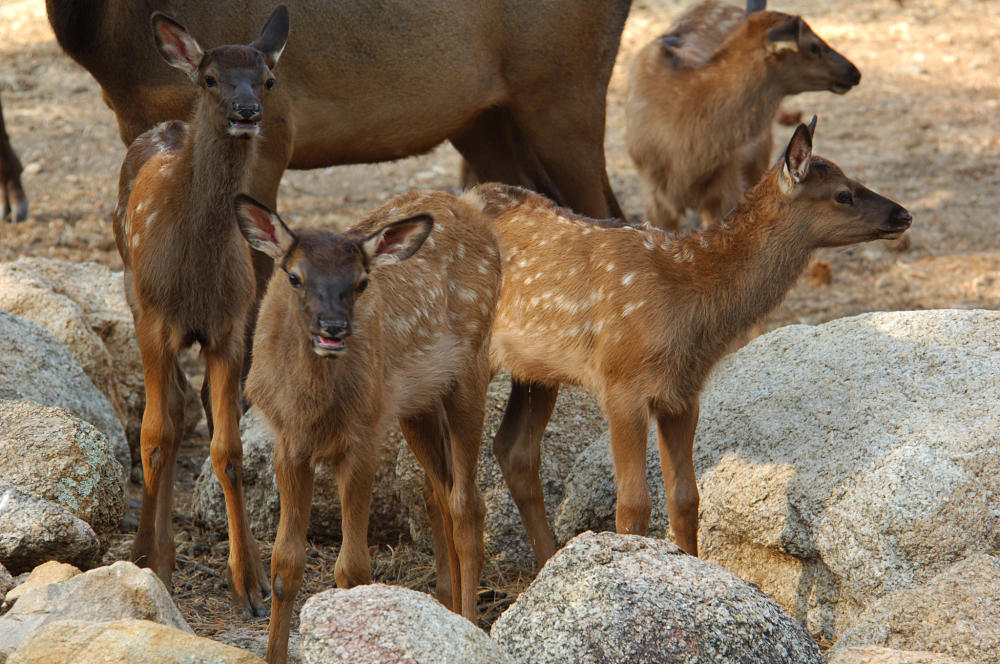
Breeding season for elk is late August through early October, and is referred to as the rut. The decrease in daylight brought on by shortening days, triggers a surge in hormones, and while female elk enter estrus at this time, bull elk go through some physical changes as well.
As testosterone and melatonin levels increase, the antlers of the male elk calcify beneath the velvet, and he scrapes the soft covering off against trees and stones, revealing a sharp, fresh rack of points. To prepare for jousting, the male elks neck actually gains muscle mass, his mane grows fuller, and the voice box thickens, creating the correct tone for effective bugling. Then males compete for territory and ranking, jousting with eachother, as well as shrubs, tree stumps and sometimes cars and mailboxes.
The males size each other up by walking in parallel lines, then turning their racks in, lowering their heads and testing their rivals strength. A few swishes back and forth, knocking antlers together, and then they brace against eachother and drive forward with straining legs, attempting to push straight through the enemy.
Injuries don't usually occur and the contests last only a few minutes. Exhausted, one or the other flees the scene, chased mercilessly out of the area, often receiving a few jabs in the rump as they go.
Males will try to attract more than one female, and particularly dominant males in their prime of 6 to 8 years old, may have a harem of 20 or even 40 cows.
The elk rut can be several weeks long, and bulls are so excited they forget to eat. A bull at the end of rut may have lost as much as 30% body weight, and are vulnerable to predation at this time.
Females are pregnant for 240 -250 days and deliver one baby in the spring. Newborn elk are very well developed, and stand within about 30 minutes of birth. But during the first week of life, they spend most of their time lying quietly in tall grass or woods. They are light red in color with white spots sprinkled across their coats to help them hide.
Baby elk will lay still in the woods while their mother feeds, and their spotted coats echo the dappling of the sun through the trees. They are instinctively quiet, and perfectly still when approached by anyone other than their mother. The newborn has no scent, and can't be detected by predators, so the mother actually stays a few yards away, coming close to nurse, but generally observing from a distance, for the first week or so.
By two weeks old, the mother returns to the herd with her new calf. The elk calf will be weaned in two months, and loses its spots in about six months.
The herd is mostly mothers with new babies, yearlings, and older females that did not breed. They will maintain the calves in little nursery groups, where all adults keep an eye on the youngsters. They are vocal in these groups, communicating with eachother with grunts and squeaks, and they will join together and take on predators, including wolves and grizzlies, if calves are threatened.
The herd will surround the babies, and will strike out with their forelimbs at anything that poses a threat. One well-placed kick can kill a full grown wolf, and if the herd is truly brave and vigilant, they may drive off even the most fearsome threat.
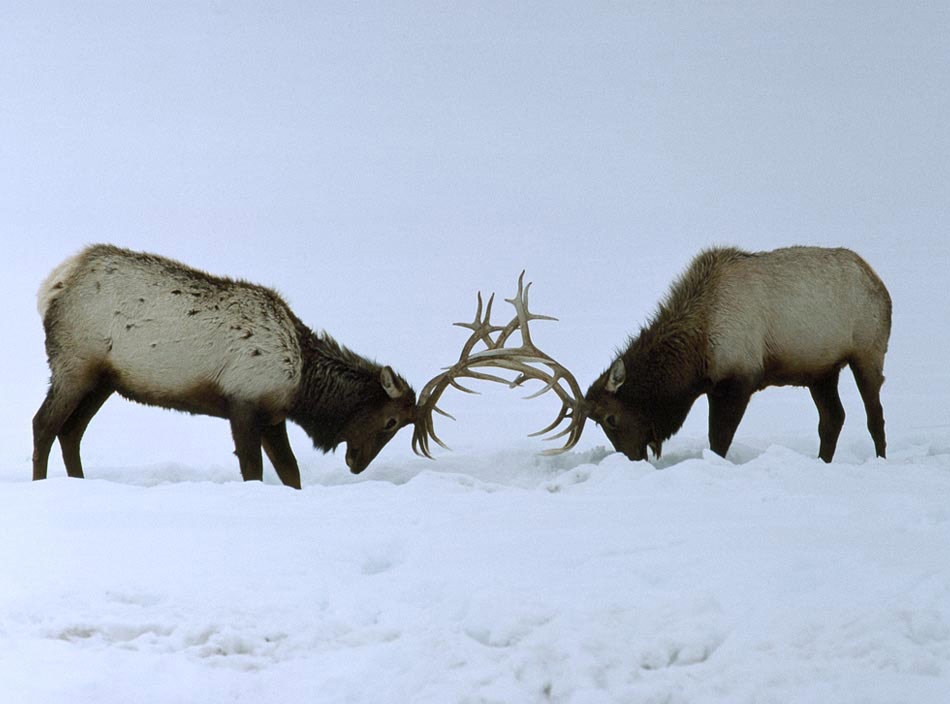

how elk grow antlers
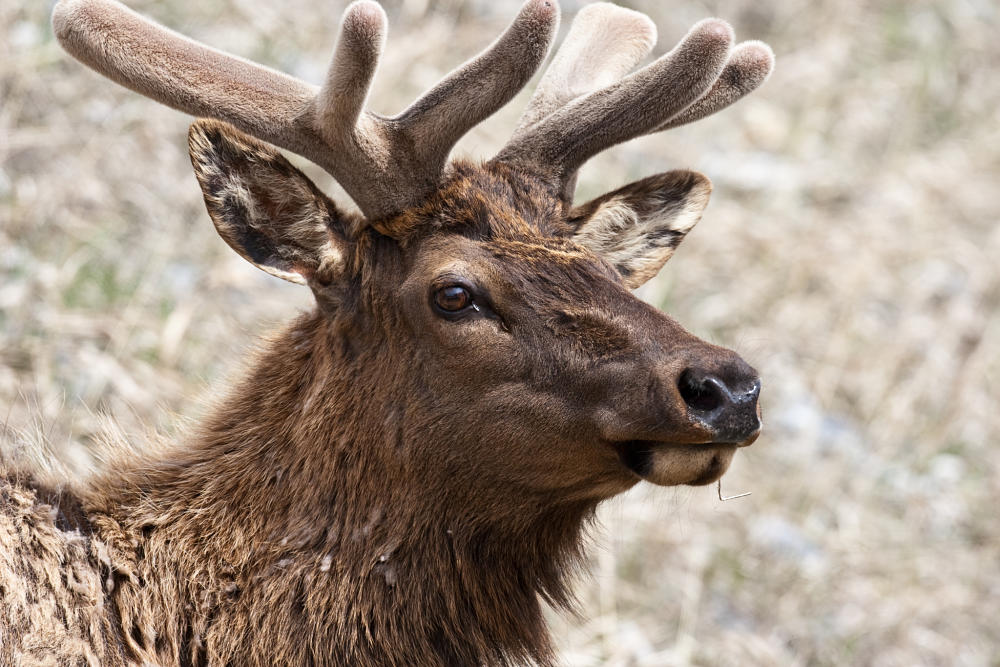
Most male deer, and some females, grow, shed, and re-grow antlers on a yearly basis. Antlers are sometimes mistakenly called "horns", but antlers are structurally completely different from horns.
Cows and antelopes grow horns, which are made of keratin, the same stuff as hair and nails. Horns don't fall off, they continue to grow throughout the life of the animal, and in most cases, both males and females grow them.
Antlers are actually made of bone, fall off and are regrown each year, and are usually only found on the males of the species.
Antlers grow from two round surfaces of bone called pedecils, that are part of the skull. Hormones triggered by seasonal changes start growing in the spring. They begin when the male has low, not high, levels of testosterone, presumably to focus energy on their growth, and insure that the animals are calm and not combative.
While the antlers are growing they are soft and spongy and can be easily damaged, so males are careful with their movements. Antlers are the fastest growing tissue known in mammals, and each spine of the antler may grow at a rate of half an inch a day. The growing antler is a pulpy tissue filled with nerves and blood vessels. It is covered with blood-filled, hairy skin called velvet.
Weirdest of all elk facts is that while the antler tissue is growing, it can actually be grafted to any part of the elks body, and it would continue to grow. The entire body is dedicated to this remarkable process.
By late summer the testosterone level begins to rise, the antler calcifies into solid bone, the velvet dries up and falls off, and the full, pointed rack appears, ready for some jousting action.
An intriguing feature of elk antlers, is how much they look like tree limbs...check it out...
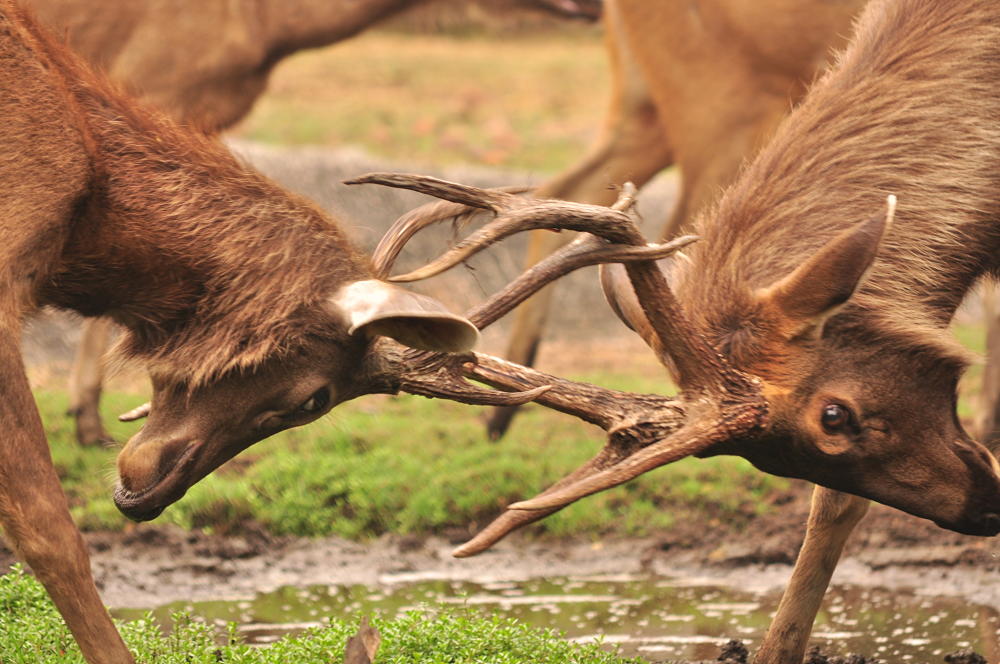
a few more elk facts
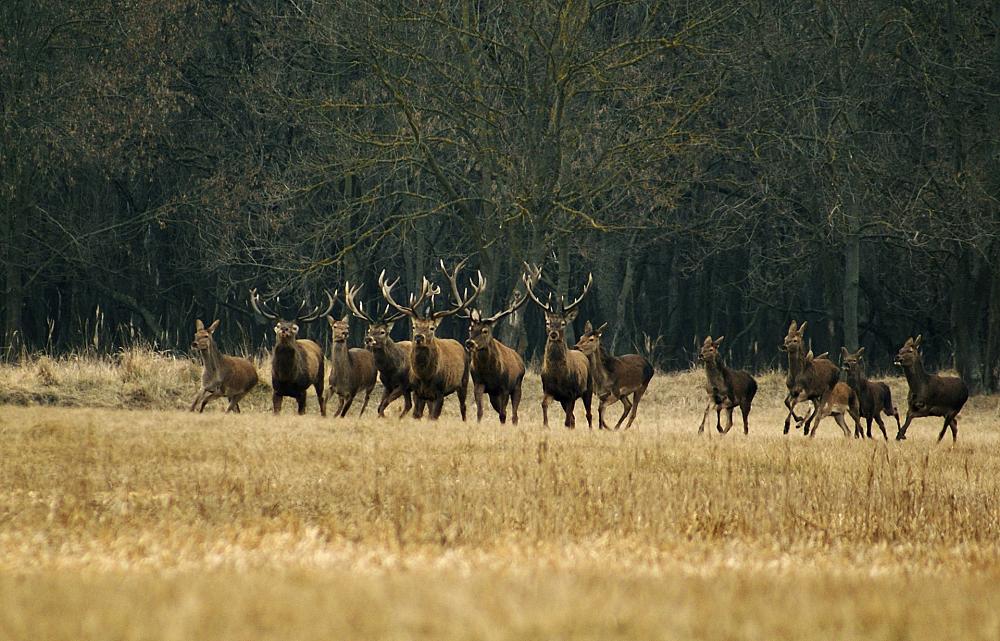
- Male elk lose their antlers in late winter, and grow a new pair in the spring
- Elk have teeth called "ivories" that were once 8-inch long tusks like a walrus
- Elk antlers may weigh 40 pounds
- Elk are ruminants and "chew their cud" just like a cow
- A well-organized elk herd can deter a wolf pack attack
- Elk are also known by the Shawnee Indian name "wapiti"
- Elk ivories are used in jewelry
- The elk antler has properties that can fight cancer and other diseases
- Elk are raised on farms where their antlers can be safely harvested without harming the elk
Scientific Classification:
| Elk - animalstats - | |||
|---|---|---|---|
| MALE | FEMALE | YOUNG | SOCIAL UNIT |
| bull | cow | calf | herd |
| GROUP | HOME | HABITAT | FAVORITE FOOD |
| gang | North
America, Europe,Asia |
woodland | grass, twigs |
| TOPSPEED | ENDANGERED | AVG WEIGHT | AVG HEIGHT |
| 45 mph | no | 400-900 pnds | 4.5-5.5 feet at shoulder |
| ESTRUS | GESTATION | BIRTH HEIGHT | BIRTHWEIGHT |
| 1 x year | 245-250 days | 24-26 inches | 35 pounds |
| RAISED BY | # OF YOUNG | AT BIRTH | STANDS UP |
| mother | 1 twins rare |
eyes
open, fully furred |
20-30 minures |
| WEANED | INDEPENDENT | MATURITY | LIFESPAN |
| 2 months | 9-11 months | 3-5 years | 12-18 years |
see more animal extreme closeups
Recent Articles
-
African Animals - Animal Facts Encyclopedia
Oct 11, 16 10:27 PM
African Animals facts photos and videos..Africa is a wonderland for animal lovers, and a schoolroom for anyone who wants to learn about nature, beauty and the rhythm of life -
Baboon Facts - Animal Facts Encyclopedia
Oct 11, 16 10:26 PM
Baboon facts, photos, videos and information - Baboons are very distinctive looking monkeys with long, dog-like snouts and close set eyes. -
Great Apes Facts - Animal Facts Encyclopedia
Oct 11, 16 10:25 PM
Great apes facts, photos and videos..Human beings did not evolve from chimpanzees, modern chimps and gorillas do not appear in the fossil records until much more recently than homo sapiens..




















